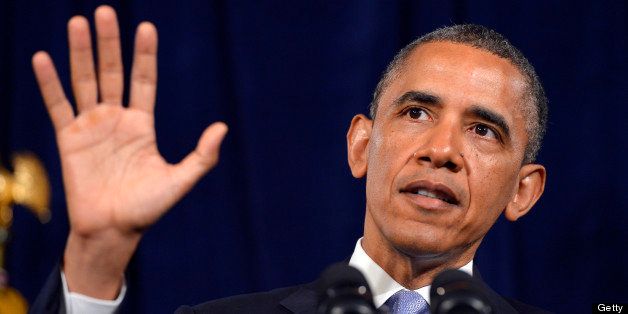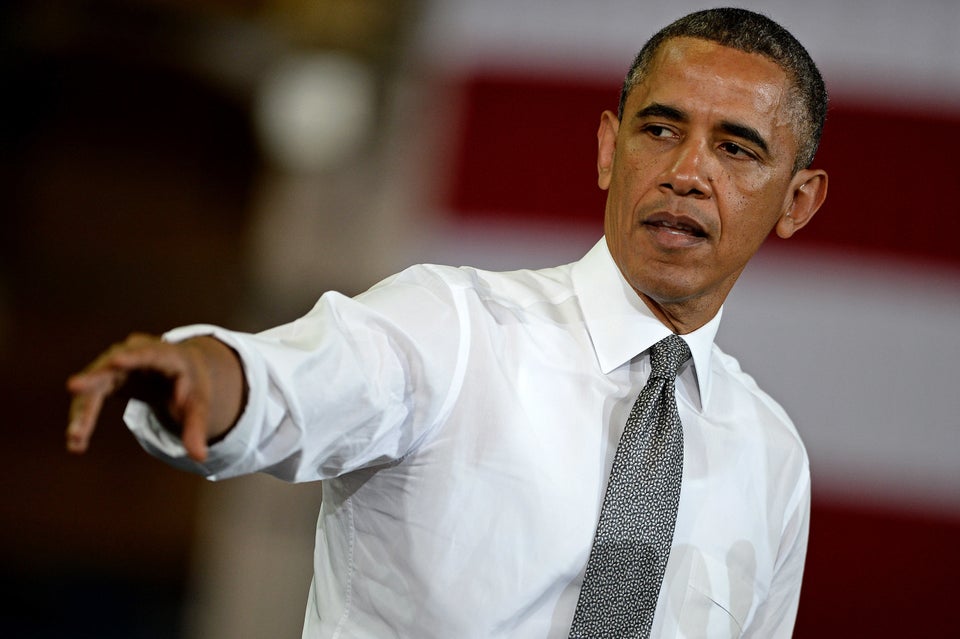
On the campaign trail last year, President Barack Obama laid out a specific jobs goal that he said would help rebuild the country's struggling middle class: Add 1 million new manufacturing positions to the U.S. economy by the end of his second term.
That goal seems to be growing more elusive by the month.
According to the jobs numbers released by the Labor Department Friday morning, although the economy added 175,000 jobs overall, it shed another 8,000 manufacturing jobs in May, making for a net loss of 17,000 since March. Overall, the encouraging gains in manufacturing that the nation saw in 2010 and 2011 appear to have tapered off, with only modest growth to show for the past year.
Experts said Friday that if the U.S. can't manage to shrink its trade deficit, Obama's goal of 1 million jobs will remain little more than a forgotten campaign document.
"It was actually a very modest goal, given that we lost over 2 million in the downturn," Dean Baker, an economist at the Center for Economic and Policy Research, said in an email. "It would still be realistic, but it really depends on trade. If we don't get the trade deficit down, I don't see any way that you would create 1 million manufacturing jobs in the next 3.5 years.
"On the other hand, if we got the [trade] deficit closer to balance," Baker added, "it is very realistic."
In the runup to last year's election, the White House put a manufacturing renaissance at the heart of its long-term economic plan, arguing that a strong manufacturing sector "sparks innovation, generates higher-wage jobs, and strengthens entire communities." The Obama campaign often highlighted the success of the U.S. auto bailout, which was started by President George W. Bush and expanded by Obama, as evidence of its commitment to America's manufacturing base, which lost more than 5 million jobs during the first decade of the century.
Of course, the idea of repatriating manufacturing jobs is politically popular on both sides of the aisle, and during elections it plays particularly well in Rust Belt states like Ohio and Michigan. But in reality, much of the job gains during the tepid recovery have occurred in lower-wage sectors, like restaurants, retail and temp work, where many workers have found refuge in lieu of better options, rather than in sectors capable of sustaining the middle class.
Scott Paul, president of the Alliance for American Manufacturing, called Friday's job report "terrible" for manufacturing. In an effort to hold Obama to his goal, Paul's group has launched a job-tracking page that shows that the economy would need to add roughly 23,000 manufacturing jobs per month to hit 1 million by the end of 2016. To date, the tracker has barely budged from zero.
"The thing that sort of gets me, from a rhetorical perspective, is you hear a lot about the resurgence of American manufacturing and the reshoring of jobs," Paul said. "No doubt there are examples, but the data doesn't lie. The numbers haven't been good for last three months, or the last 12 months."
The administration has pushed a few longer-term policy objectives that it's said will help lead to a manufacturing resurgence. In his 2013 budget proposal, the president called for putting $1 billion toward a national network of workforce development institutes. Congress, however, has little appetite for such spending at the moment. Other administration proposals for manufacturing, such as extending tax breaks for companies that return jobs to the U.S., have remained in limbo as well.
In the shorter term, Paul and Baker argued that the dollar is valued too highly against other currencies to reduce the trade deficit with countries like China, and that there seems to be little political will within the administration to do much about it. Paul also pointed to the limited government spending on infrastructure as a potential drag on the manufacturing sector.
"I can't remember the last time I heard the president or a senior administration official rearticulate the goal of a million new manufacturing jobs," Paul said. "And it was one of the most common ads of the presidential campaign."

